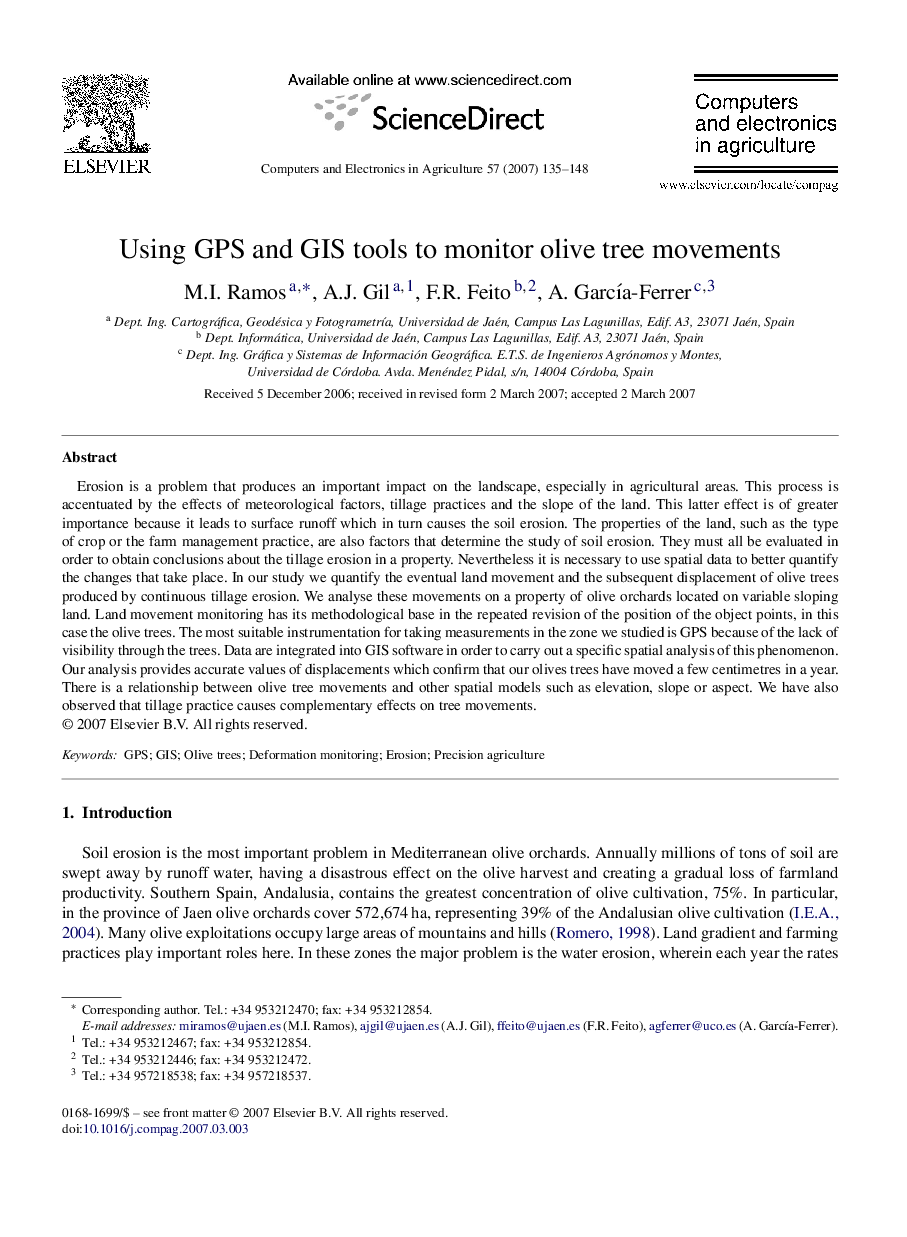| Article ID | Journal | Published Year | Pages | File Type |
|---|---|---|---|---|
| 85260 | Computers and Electronics in Agriculture | 2007 | 14 Pages |
Erosion is a problem that produces an important impact on the landscape, especially in agricultural areas. This process is accentuated by the effects of meteorological factors, tillage practices and the slope of the land. This latter effect is of greater importance because it leads to surface runoff which in turn causes the soil erosion. The properties of the land, such as the type of crop or the farm management practice, are also factors that determine the study of soil erosion. They must all be evaluated in order to obtain conclusions about the tillage erosion in a property. Nevertheless it is necessary to use spatial data to better quantify the changes that take place. In our study we quantify the eventual land movement and the subsequent displacement of olive trees produced by continuous tillage erosion. We analyse these movements on a property of olive orchards located on variable sloping land. Land movement monitoring has its methodological base in the repeated revision of the position of the object points, in this case the olive trees. The most suitable instrumentation for taking measurements in the zone we studied is GPS because of the lack of visibility through the trees. Data are integrated into GIS software in order to carry out a specific spatial analysis of this phenomenon. Our analysis provides accurate values of displacements which confirm that our olives trees have moved a few centimetres in a year. There is a relationship between olive tree movements and other spatial models such as elevation, slope or aspect. We have also observed that tillage practice causes complementary effects on tree movements.
